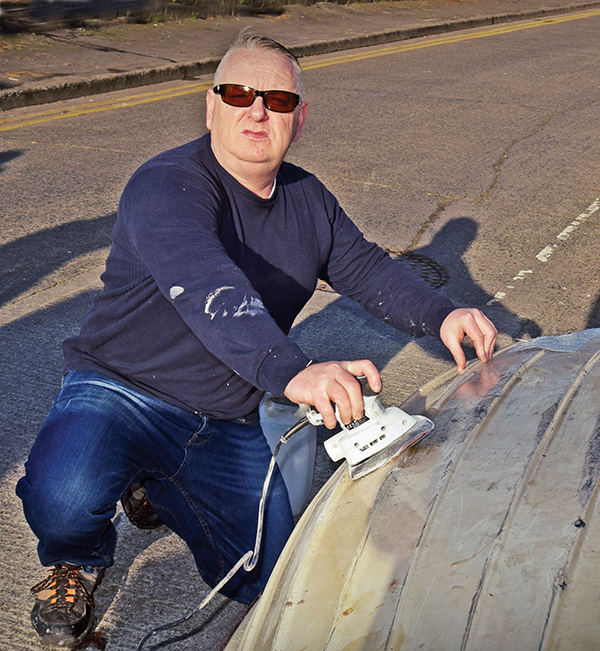
Pictured: James Hamilton.
Photo: Kevin O’Gorman.
James Hamilton is a man on a mission. For the past four years he has been campaigning for greater public access to the waters of the river Liffey, especially for people with impaired mobility or vision.
He has come to the conclusion that “our river is being privatised, deliberately or inadvertently, at least the banks of the river” and laments this further erosion of the commons.
James is not looking for something new, he wants traditional access rights restored. He recalls how Dubliners had unhindered rights to the river when he was younger and points out that long-established access points such as The Block, which was situated at the end of the South Wall, are now gone.
Although there are a number of access points along the river, most of them, such as the pontoons at St. Patrick’s Rowing Club, Stella Maris Rowing Club and Poolbeg Yacht Club, are in private control or ownership. What public access there is, for example the slipway at the mouth of the Dodder known as the Gut, is unsuitable for the use James has in mind.
James told NewsFour that one wheelchair user recently had the unfortunate experience of being left behind as a group of his friends went on a fishing trip because he could not access the boat from the Gut, which is steep and quite treacherous. “Can you imagine how he felt?” James asks. “Can you imagine how I felt having to leave him there?”
The Liffey has always played a big part in the lives of Dubliners, both as a place of work and recreation; during hard times fishing from small boats helped many families survive. James is not happy to see this space being privatised and is looking for assurances that the new development plans for the riverside and port area take cognisance of the rights of all citizens to have equal access to the water.
He is particularly concerned that provision is made for people with physical disabilities and visual impairment, saying “all citizens should have equal access to the water, especially people with disabilities. There should be unhindered access to the river, with suitable parking facilities close enough to access points to make them viable for wheelchair users.”
NewsFour set out to determine who has responsibility for the river and access to the waters. This turned out to be more difficult than one might expect, sorting through the myriad of different authorities who have control of the river and its environs.
While everyone was very helpful, it took some time to establish that responsibility for the water between Islandbridge and the Toll Bridge is under the jurisdiction of the Dublin Port and Docks Board, whilst DCC manage the bridges. Fergus Britton of the Dublin Port and Docks Board confirmed this and said that a number of pontoons along the river are available to the public. However, on further investigation it turns out that the access points he suggested are not freely available and that permission must be sought and proposals submitted to the DCC to use them.
Two points initially looked promising, the pontoon used by the Jeanie Johnson and City Kayaking Dublin at Dublin City Moorings, beside the IFSC, and the pontoon on the other side of the Seán O’Casey footbridge, still on the North Side, which appears to have free public access.
Clara Hickey of Dublin City Council told NewsFour that there isn’t free access from either pontoon, but that James could submit a proposal about his intentions and it would be considered. She felt that parking could be an issue, because the carpark behind the building which was previously the headquarters of the DDDA is currently in use and could be full.
For James, this is not enough. He said, “I think that in this day and age of equality for all it beggars belief that there is no safe, unhindered public access and no wheelchair accessibility to our beautiful river and bay. That’s honestly how I feel after four years campaigning for access.”
He makes the point that there is far superior access to waterways in most other countries that he visits and asks: “Why not here?”
By Jennifer Reddin



